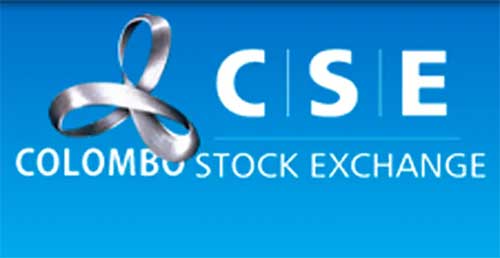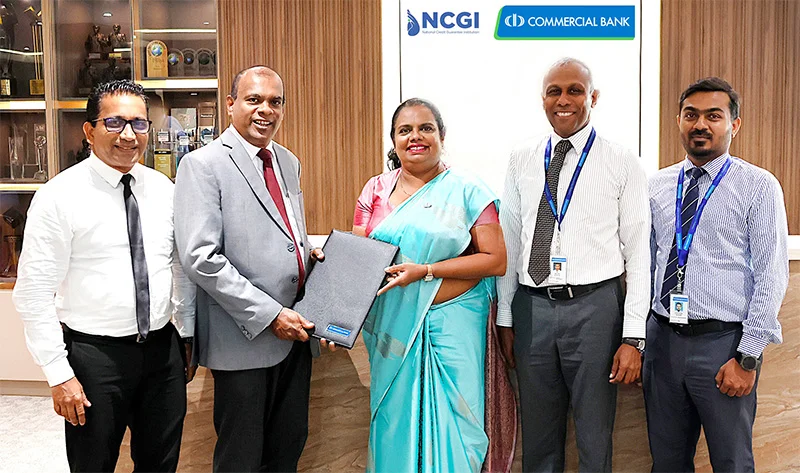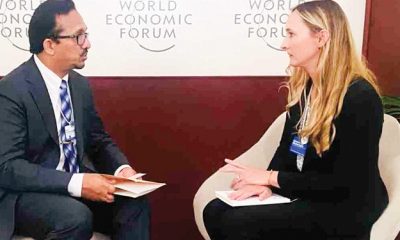Business
Two major acquisitions at CSE

By Hiran H. Senewiratne
Two major acquisitions took place at the CSE this week. One was Vidul Lanka, which acquired 50 percent of shares in Solar Universe Pvt Limited. The company generates 10 megawatts for the national grid and operates a ground mounted solar power plant, stock market analysts said.
Accordingly, total investment for its acquisition and development of the project would cost around Rs 1.4 billion. Meanwhile, Aitken Spence PLC acquired energy company Waltrim Energy Limited for a financial consideration of Rs 900 million. The company generates 6.6 megawatts for the national grid, operating three plants in Nuwara Eliya. Waltrim was a subsidiary of Sunshine Holdings which owned a 60 percent stake while Mouldex owned the balance shares.
Amid those developments, CSE was bullish throughout the day and financial sector counters witnessed gains. Both indices moved upwards. All Share Price Index went up by 117.8 points and S and P SL20 rose by 48.10 points. Turnover stood at Rs 3.92 billion with four crossings.
Those crossings were reported in HNB, which crossed 3.9 million shares to the tune of Rs 516.7 million, its shares traded at Rs 132, JKH 200,000 shares crossed for Rs 29.8 million and its shares traded at Rs 148.75, Sampath Bank 500,000 shares crossed for Rs 27 million, its shares traded at Rs 54 and Lanka Walltiles 500,000 shares crossed for Rs 24.25 million, its shares traded at Rs 48.50.
In the retail market, top companies that mainly contributed to the turnover were; Browns Investments Rs 500.7 million (87.2 million shares traded), Expolanka Rs. 361.2 million (7.4 million shares traded), Dipped Products Rs 285.5 million (5.1 million shares traded), Sampath Bank Rs 233.8 million (4.3 million shares traded), LOLC Rs 216 million (685,000 shares traded), and Royal Ceramic Rs 165.7 million (517,000 shares traded). During the day 150.6 million share volumes changed hands in 21700 transactions.
LOLC and Browns Investments were the main contributors to the All Share Price Index and their share prices also appreciated during the day. LOLC contributed 22 points. Its share price moved up by seven percent or Rs 20.25. Its shares started trading at Rs 304.50 and at the end of the day they moved up to Rs 324.75. Browns Investments contributed 13 points. Its shares moved up by seven percent or 40 cent. Its shares traded at Rs 5.60 and at the end of the day they moved to Rs 6.
The Sri Lankan rupee has come once again under pressure. According to the daily exchange report of the Central Bank of Sri Lanka (CBSL), the current buying rate of the US dollar on April 8 stood at Rs.199.21 and selling rate of the US dollar stood at Rs.203.50.This is the highest buying and selling rate recorded for the US dollar in history.
The decline of the rupee vis-à-vis the US dollar is likely to have a mixed impact on listed companies. Rupee will have a negative impact for companies, such as, Dialog Axiata, Hemas Holdings, Lanka Lubricants while the slightly negative counters are, Sunshine Holdings, Tokyo Cement (Lanka), Acccess Engineering, Cargills (Ceylon) and Ceylon Cold Stores.
Those which will benefit from a depreciation include, JKH, banks, TeeJay, Hayleys Fabric, Dipped Products and hotels; though at present tourist arrivals are very low.
Business
Sampath Bank’s strong results boost investor confidence

The latest earnings report for Sampath Bank PLC (SAMP), analysed by First Capital Research (FCR), firmly supports a positive outlook among investors. The research firm has stuck with its “MAINTAIN BUY” recommendation , setting optimistic targets: a Fair Value of LKR 165.00 for 2025 and LKR 175.00 for 2026. This signals strong belief that the bank is managing the economy’s recovery successfully.
The key reason for this optimism is the bank’s shift towards aggressive, yet smart, growth. Even as interest rates dropped across the market, which usually makes loan income (Net Interest Income) harder to earn, Sampath Bank saw its total loans jump by a huge 30.2% compared to last year. This means the bank lent out a lot more money, increasing its loan book to LKR 1.1 Trillion. This strong lending, which covers trade finance, leasing, and regular term loans, shows the bank is actively helping businesses and people spend and invest as the economy recovers.
In addition to loans, the bank has found a major new source of income from fees and commissions, which surged by 42.6% year-over-year. This money comes from services like card usage, trade activities, and digital banking transactions. This shift makes the bank less reliant on just interest rates, giving it a more stable and higher-profit way to earn money.
Importantly, this growth hasn’t weakened the bank’s foundations. Sampath Bank is managing its funding costs better, partly by improving its low-cost current and savings account (CASA) ratio to 34.5%. Moreover, the quality of its loans is getting better, with bad loans (Stage 3) dropping to 3.77% and the money set aside to cover potential losses rising to a careful 60.25%.
Even with the new, higher capital requirements for systemically important banks, the bank remains very strong, keeping its capital and cash buffers robust and well above the minimum standards.
In short, while the estimated profit for 2025 was adjusted slightly, the bank’s excellent performance and strong strategy overshadow this minor change. Sampath Bank is viewed as a sound stock with high growth potential , offering investors attractive total returns over the next two years.
By Sanath Nanayakkare
Business
ADB approves $200 million to improve water and food security in North Central Sri Lanka

The Asian Development Bank (ADB) has approved a $200 million loan to support the ongoing Mahaweli Development Program, Sri Lanka’s largest multiuse water resources development initiative.
The program aims to transfer excess water from the Mahaweli River to the drier northern and northwestern parts of Sri Lanka. The Mahaweli Water Security Investment Program Stage 2 Project will directly benefit more than 35,600 farming households in the North Central Province by strengthening agriculture sector resilience and enhancing food security.
ADB leads the joint cofinancing effort for the project, which is expected to mobilize $60 million from the OPEC Fund for International Development and $42 million from the International Fund for Agricultural Development, in addition to the ADB financing.
“While Sri Lanka has reduced food insecurity, it remains a development challenge for the country,” said ADB Country Director for Sri Lanka Takafumi Kadono. “Higher agricultural productivity and crop diversification are necessary to achieve food security, and adequate water resources and disaster-resilient irrigation systems are key.”
The project will complete the government’s North Central Province Canal (NCPC) irrigation infrastructure, which is expected to irrigate about 14,912 hectares (ha) of paddy fields and provide reliable irrigated water for commercial agriculture development (CAD). It will help complete the construction of tunnels and open and covered canals. The project will also establish a supervisory control and data acquisition system to improve NCPC operations. Once completed, the NCPC will connect the Moragahakanda Reservoir to the reservoirs of Huruluwewa, Manankattiya, Eruwewa, and Mahakanadarawa.
Sri Lanka was hit by Cyclone Ditwah in late November, resulting in the country’s worst flood in two decades and the deadliest natural hazard since the 2004 tsunami. The disaster damaged over 160,000 ha of paddy fields along with nearly 96,000 ha of other crops and 13,500 ha of vegetables.
Business
ComBank to further empower women-led enterprises with NCGIL

The Commercial Bank of Ceylon has reaffirmed its long-standing commitment to advancing women’s empowerment and financial inclusion, by partnering with the National Credit Guarantee Institution Limited (NCGIL) as a Participating Shareholder Institution (PSI) in the newly introduced ‘Liya Shakthi’ credit guarantee scheme, designed to support women-led enterprises across Sri Lanka.
The operational launch of the scheme was marked by the handover of the first loan registration at Commercial Bank’s Head Office recently, symbolising a key step in broadening access to finance for women entrepreneurs.
Representing Commercial Bank at the event were Mithila Shyamini, Assistant General Manager – Personal Banking, Malika De Silva, Senior Manager – Development Credit Department, and Chathura Dilshan, Executive Officer of the Department. The National Credit Guarantee Institution was represented by Jude Fernando, Chief Executive Officer, and Eranjana Chandradasa, Manager-Guarantee Administration.
‘Liya Shakthi’ is a credit guarantee product introduced by the NCGIL to facilitate greater access to financing for women-led Micro, Small, and Medium Enterprises (MSMEs) that possess viable business models and sound repayment capacity but lack adequate collateral to secure traditional bank loans.
-

 Features5 days ago
Features5 days agoFinally, Mahinda Yapa sets the record straight
-

 News6 days ago
News6 days agoCyclone Ditwah leaves Sri Lanka’s biodiversity in ruins: Top scientist warns of unseen ecological disaster
-

 Features5 days ago
Features5 days agoHandunnetti and Colonial Shackles of English in Sri Lanka
-

 Business4 days ago
Business4 days agoCabinet approves establishment of two 50 MW wind power stations in Mullikulum, Mannar region
-

 News7 days ago
News7 days agoJetstar to launch Australia’s only low-cost direct flights to Sri Lanka, with fares from just $315^
-

 News4 days ago
News4 days agoGota ordered to give court evidence of life threats
-

 Features6 days ago
Features6 days agoAn awakening: Revisiting education policy after Cyclone Ditwah
-

 Features4 days ago
Features4 days agoCliff and Hank recreate golden era of ‘The Young Ones’













